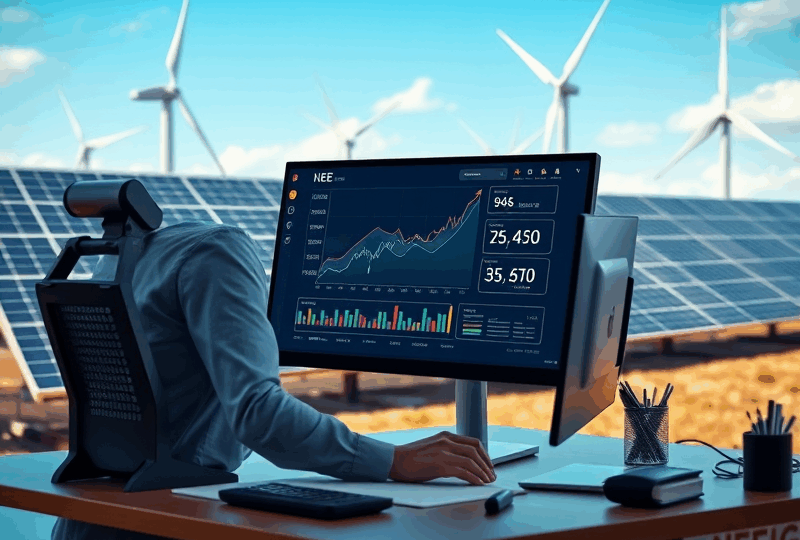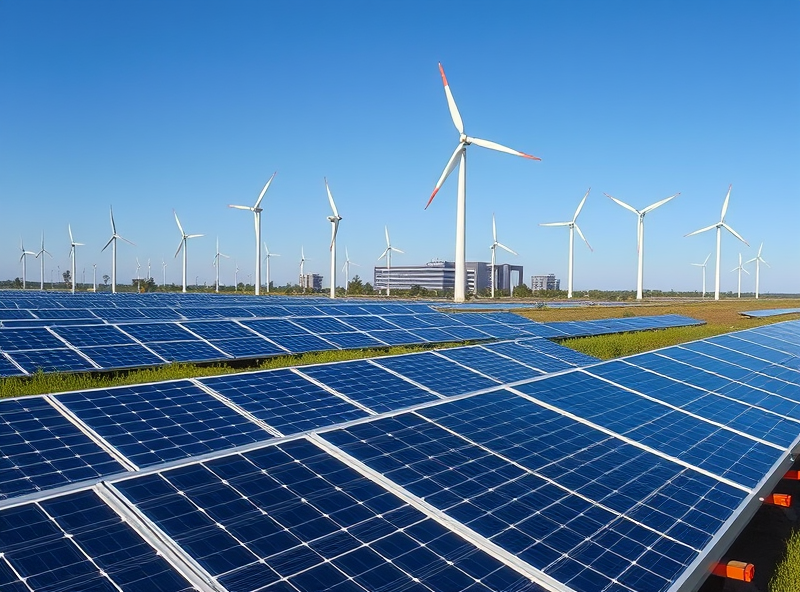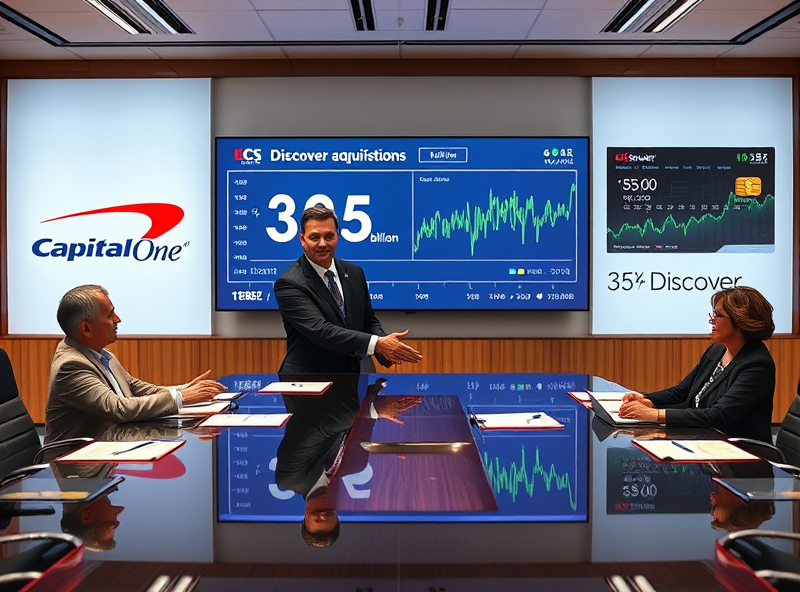
Is NextEra Energy (NEE) Stock Overheated or Undervalued?
Strong Analyst Ratings Suggest Upward Potential

NextEra Energy (NEE) has long been considered a cornerstone in the renewable energy sector, and recent analyst ratings suggest that the stock may be poised for further growth. Despite some concerns about rising interest rates and sector volatility, analysts remain largely bullish on NEE due to its strong fundamentals, consistent dividend growth, and leadership in clean energy infrastructure.
As of mid-2024, several major financial institutions, including Morgan Stanley and Wells Fargo, have reiterated their ‘Overweight’ or ‘Buy’ ratings on NEE. The average 12-month price target currently hovers around $80, representing a potential upside of over 15% from current levels. Analysts cite the company’s robust pipeline of renewable projects, stable cash flows, and strategic investments in solar and wind as key drivers of future earnings.
Furthermore, NEE’s regulated utility subsidiary, Florida Power & Light, provides a reliable revenue stream that cushions the company from broader market volatility. This combination of growth and stability makes NEE an attractive option for long-term investors seeking exposure to the green energy transition.
For those considering whether NEE is overheated or undervalued, the strong analyst sentiment leans toward the latter. The stock’s recent pullback may present a buying opportunity, especially for investors focused on ESG (Environmental, Social, and Governance) criteria.
For more detailed analyst insights, you can refer to Morningstar’s latest equity research on NEE: https://www.morningstar.com/stocks/xnys/nee/quote
Solid Fundamentals Backed by Clean Energy Leadership

NextEra Energy (NEE) has long been recognized as a trailblazer in the clean energy sector, and its solid fundamentals continue to support its long-term investment appeal. As the world accelerates its transition to renewable energy, companies like NextEra, which are deeply rooted in sustainability and innovation, are increasingly gaining attention from both institutional and retail investors.
At the core of NextEra’s strength is its leadership in wind and solar energy production. Through its subsidiary, NextEra Energy Resources, the company is the largest generator of renewable energy from the wind and sun in the world. This strategic positioning gives it a significant competitive edge as global energy policies shift toward decarbonization.
Financially, NextEra Energy maintains a robust balance sheet. The company has consistently delivered strong earnings, with a track record of increasing dividends for over 25 consecutive years. This not only reflects financial health but also signals management’s confidence in future cash flows. According to the company’s Q1 2024 earnings report, adjusted earnings per share grew by 10% year-over-year, demonstrating resilience even amid macroeconomic headwinds.
Valuation-wise, while some investors may view NEE’s premium pricing as a sign of overheating, it’s important to consider the context. The stock’s valuation reflects its growth potential, clean energy leadership, and reliable dividend history. Compared to peers, NextEra trades at a higher P/E ratio, but this is often justified by its forward-looking business model and scale in renewables.
In a world increasingly focused on ESG (Environmental, Social, and Governance) criteria, NextEra’s clean energy portfolio positions it well for sustainable growth. Investors looking for long-term value with a strong environmental impact may find NEE a compelling choice.
For more on NextEra’s financials and sustainability initiatives, you can visit their official investor relations page: https://www.investor.nexteraenergy.com/
Dividend Payouts and Volatility: Short-Term Risks to Consider

When evaluating whether NextEra Energy (NEE) stock is overheated or undervalued, it’s essential to consider not just its long-term growth prospects, but also short-term risks that may affect its performance. One of the key short-term concerns for investors is the balance between dividend payouts and stock price volatility.
NextEra Energy is known for its consistent dividend payments, which can be attractive to income-focused investors. However, dividend-paying stocks can sometimes experience price volatility, especially in a rising interest rate environment. As rates increase, fixed-income alternatives become more appealing, potentially putting downward pressure on utility stocks like NEE.
Moreover, while NEE has a strong track record of dividend growth, investors should be aware that high payout ratios can limit a company’s ability to reinvest in future growth. This is particularly relevant for companies in capital-intensive sectors like energy, where ongoing investment in infrastructure and clean energy projects is crucial.
Volatility can also be influenced by broader market sentiment. For example, utility stocks are often seen as defensive, but during periods of economic optimism, investors may rotate out of defensive sectors into higher-growth opportunities, causing temporary dips in utility stock prices.
For those considering NEE, it’s wise to assess how comfortable you are with short-term price swings in exchange for steady dividend income. Reviewing the company’s payout ratio, debt levels, and capital expenditure plans can provide a clearer picture of its financial health and ability to sustain dividends.
For more insights on dividend investing and utility sector trends, you can visit the U.S. Securities and Exchange Commission’s guide on [Dividend Investing](https://www.investor.gov/introduction-investing/investing-basics/investment-products/stocks/dividends).
In summary, while NextEra Energy remains a solid long-term play in the renewable energy space, short-term risks related to dividend sustainability and market volatility should not be overlooked. Understanding these dynamics can help you make a more informed investment decision.
Is Now a Good Time to Buy? Technical Overview

NextEra Energy (NEE) has long been a favorite among dividend investors and ESG-conscious portfolios, but recent market fluctuations have left many wondering: is now the right time to buy? Let’s take a closer look at the technical indicators to find out.
Currently, NEE stock is trading near its 200-day moving average, a key level that often signals a potential trend reversal. When a stock hovers around this line, it suggests a period of consolidation — neither strongly bullish nor bearish. However, the Relative Strength Index (RSI) for NEE is hovering around 45, which indicates the stock is neither overbought nor oversold. This neutral RSI suggests that the stock is not overheated and may offer room for upward movement.
Another technical indicator worth noting is the MACD (Moving Average Convergence Divergence), which recently showed a bullish crossover. This is often interpreted as a signal that momentum is shifting in favor of buyers. Additionally, trading volume has been slightly above average in recent sessions, which could indicate growing investor interest.
From a chart pattern perspective, NEE appears to be forming a base after a prolonged downtrend, which can be a precursor to a breakout. While no technical analysis is foolproof, these signals collectively suggest that NEE may be undervalued at current levels and could be poised for a rebound — especially if broader market conditions remain stable.
For those considering a long-term investment, this could be a favorable entry point, particularly if you believe in the long-term growth of renewable energy and utility infrastructure. As always, it’s wise to combine technical analysis with fundamental research and consider your own risk tolerance.
For more detailed financial data and stock analysis, you can visit: https://www.morningstar.com/stocks/xnys/nee/quote







